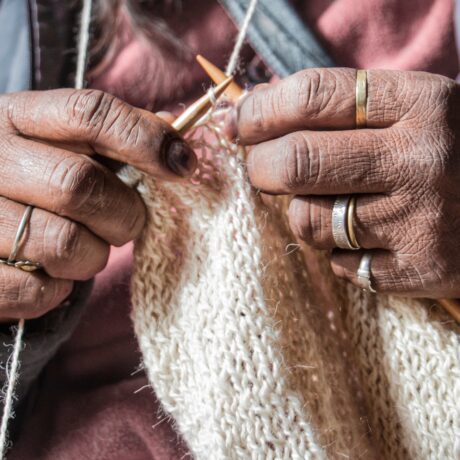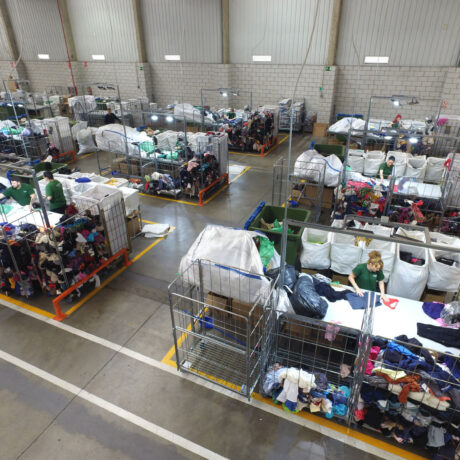Red Nose Day 2015
My small son announced breathlessly yesterday when I collected him from school,
“it’s Red Nose Day soon Mummy, I can’t wait!”
We were both excited, each for different reasons. He because of the appealing crimson character noses that he can collect this week. I because of the stylish range of T-shirts designed by some of the biggest names in British fashion which are now on sale in TK Maxx and modelled by a long list of celebrity names including David Gandy and Tom Hiddleston.
But more importantly, I was excited because the T-shirts and brightly spotted onesies are made from Fairtrade certified cotton and represent hope for a 250-strong group of cotton farmers located in the foothills of the Rwenzori Mountains of the Moon in Western Uganda.
No doubt the designers – Anya Hindmarch, Karl Lagerfeld, Diane von Furstenberg, Henry Holland and Matthew Williamson – are aware and proud of the fact that the cotton in their signature designs was lovingly grown by the Rwenzori Farmers’ Marketing Cooperative Society Limited, a group of migrant farmers from hard-to-reach communities.
About half of the members are women. The beauty of the surrounding cotton fields is in sharp contrast to the hardships the farmers face both in their home communities and the many challenges in producing cotton: unscrupulous landlords, lack of water, volatile prices, and no cash to buy the inputs they need to grow a flourishing cotton crop.
Yet, the farmers have gone from what seemed like a hopeless situation in 2012 when the cotton price crashed and unorganized farmers were left burdened with debts, to being licensed to trade as a Fairtrade cooperative in December 2014.
Practically speaking, this means that farmers selling cotton on Fairtrade terms receive a Fairtrade Minimum Price for their cotton, which acts as a vital safety net and gives the stability that is needed to plan for the future. But it doesn’t stop there. They also earn an extra sum – the Fairtrade Premium – which farmer groups can then decide democratically how to best use, to improve quality and productivity for their crops and social projects such as education and health services, to benefit their communities.
The story of their journey from seeming hopelessness to being the only Fairtrade certified cooperative in East Africa to trade cotton lint, is one of hard grit and determination. It is a promise for a better future and a beacon of hope for the transformation of the cotton value chain internationally to improve the situation of farmers.
Unlike other cotton cooperatives in Africa, where ownership of their crop ceases at the point of sale to the ginnery, this cooperative contracts the ginning and retains ownership of the cotton. This enables them to increase their income by at least 30% through the sale of cotton seed and cotton lint thus moving the farmers up the value chain, a significant structural shift for the farmers in the world of cotton production.
Now, with the additional premium that they can achieve through the sale of their cotton as Fairtrade, their income will increase further and they will be able to begin to address some of the challenges faced in areas like access to clean drinking water.
Sadly however, many more cotton farming cooperatives around the world could benefit from Fairtrade certification, but are struggling to get enough sales to drive bigger change in their communities.
There seems to be a trend in the UK now to demand to know how clothes were made, but it would be good if this could extend further to the cotton farmers picking the cotton. This lack of awareness if resulting in desperate poverty. Do fashionistas realise that as many as 100m rural households – 90 percent of them in developing countries – are directly engaged in cotton production?
An estimated 350m people work in the cotton sector when family labour, farm labour and workers in connected services such as transportation, ginning, baling and storage are taken into account. Yet cotton farmers are at the end of a long and complex supply chain in which they are virtually invisible and wield little power or influence. With high levels of illiteracy and limited land holdings, many cotton farmers live below the poverty line and are dependent on the middle men or ginners who buy their cotton, often at prices below the cost of production.
I am excited that Red Nose Day on 13th March will mean a brighter future for cotton farming communities in Uganda and I hope that everyone involved in designing and enjoying the T-shirts realise how special their cotton is and how transformational it can be to the lives of cotton farmers in Africa and around the world if we all choose products that change lives.
Watch this short film to learn about how cotton farmers in Senegal have benefitted from Fairtrade sales
Join Fashion Revolution Day on 24 April 2015. Turn an item of clothing inside-out and ask the brands the question: Who Made My Clothes? #FashRev
Together we will use the power of fashion to inspire change
and reconnect the broken links in the supply chain.








